Mastering Piano Notes for Beginners
The piano is an enchanting instrument, rich in versatility and capable of producing exquisite music. Learning its keys may seem daunting at first glance, but with the right approach, anyone can grasp the fundamentals of piano notes. This guide will explore methods to learn and remember piano notes, including using sheet music, practicing hand positions with scales, and developing the ability to recognize notes by ear. Regular practice is key to improving proficiency and comfort with the instrument.
Understanding Notes Through Sheet Music 
- Mapping Treble Clef Notes: Begin by sketching a staff, a series of five lines and four spaces found in music books, with each representing a different note. The treble clef, resembling an ampersand (&), marks the staff for higher-pitched notes. Assign a single note to each line and space, starting from the bottom and working upwards, remembering the musical alphabet runs from A to G.
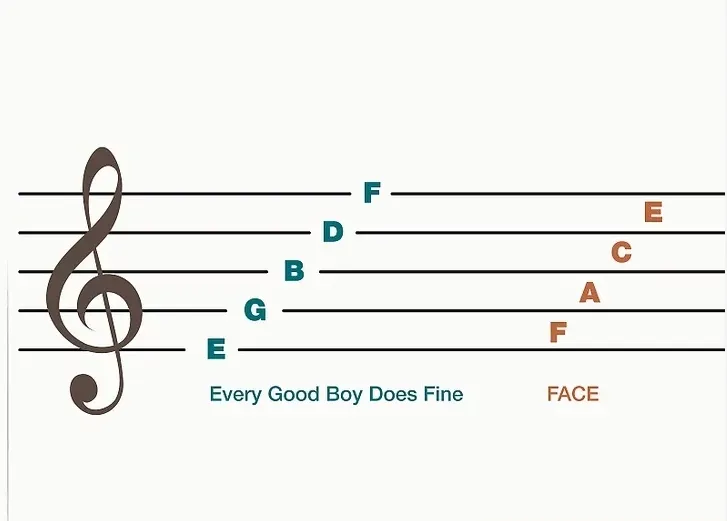
- Memorizing Treble Clef Notes with Mnemonics: To aid memory, use mnemonic phrases. For the lines, starting from the bottom, the phrase “Every Good Boy Does Fine” can be helpful, while the spaces spell out “FACE.”
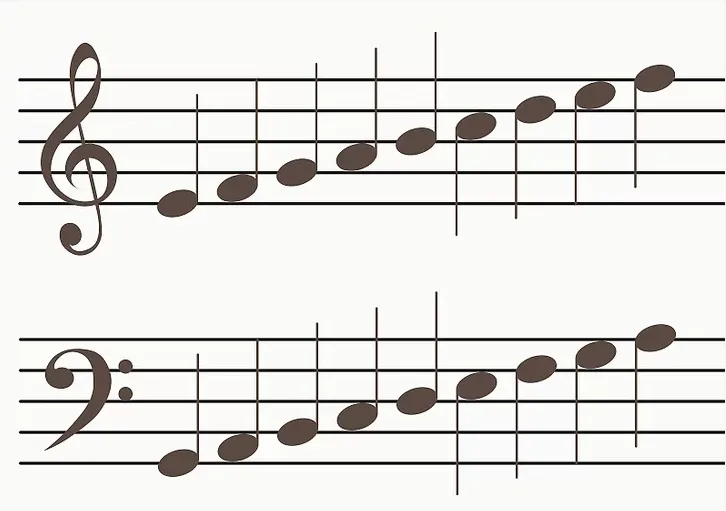
- Introducing the Bass Clef: For lower-pitched notes, drawn with the left hand, add a bass clef staff below the treble. This clef looks like a stylized C with dots. Between these staves lie three invisible notes, creating a bridge of musical continuity.
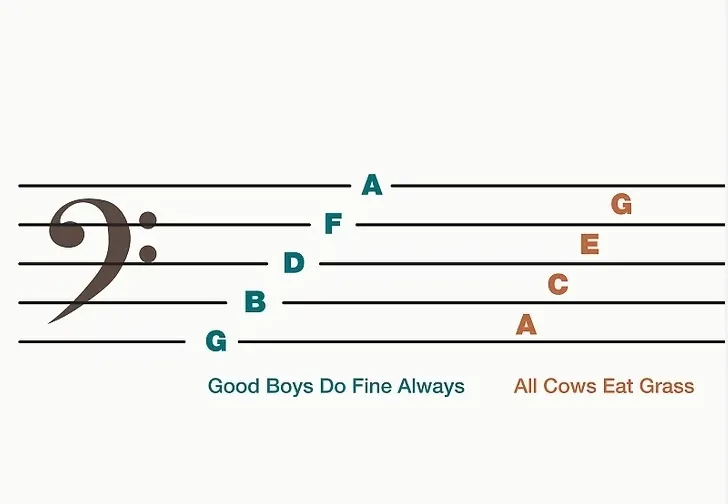
- Memorizing Bass Clef Notes with Phrases: Recall the bass clef lines with “Good Boys Do Fine Always” and the spaces with “All Cows Eat Grass,” linking each word to a specific note.
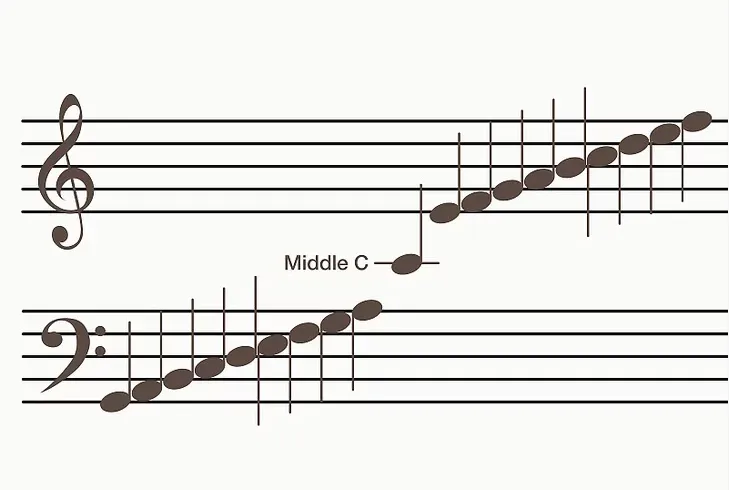
- Identifying Middle C and Other Key Notes: Middle C sits between the treble and bass clefs, acting as a central point for hand positioning and note counting on the keyboard.
Locating Piano Keys 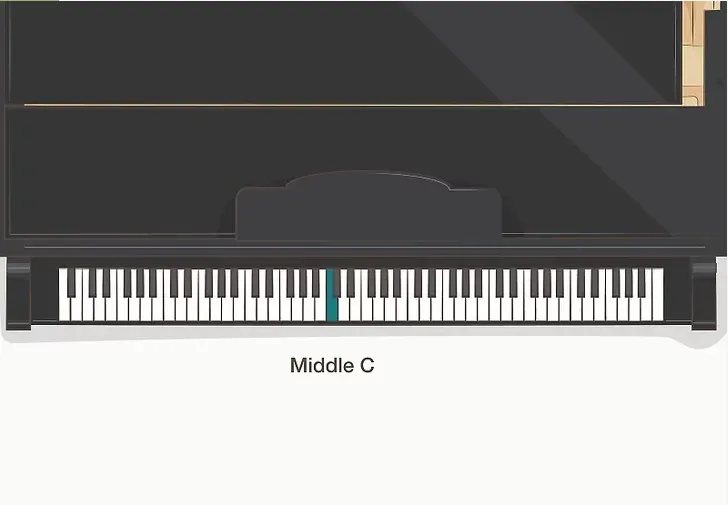
- Finding Middle C: Middle C is the central C key, usually marked beneath the piano manufacturer’s logo, serving as a pivotal starting point for playing.
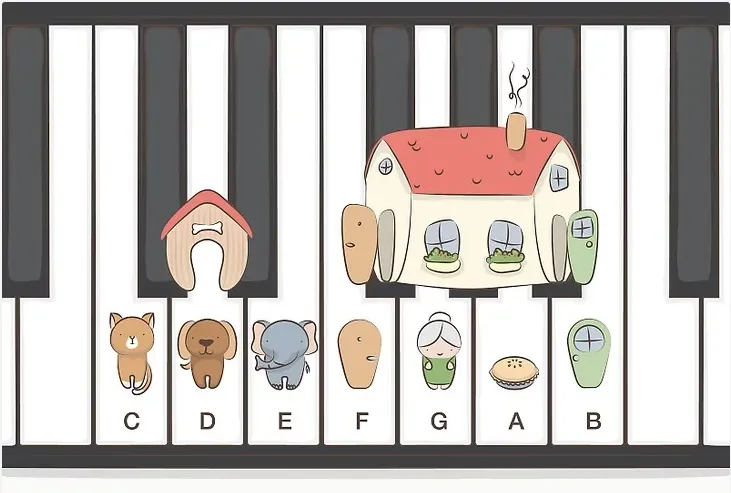
- Learning Notes with a Story: Use imaginative stories to remember note locations, such as associating sets of black keys with familiar objects or characters to recall adjacent white keys’ notes.

- Using Stickers for Note Identification: For beginners, placing labeled stickers on keys can provide visual cues for note recognition, which can be removed as familiarity increases.

- Counting to Discover Notes: Understanding the sequence of white keys (A to G) aids in finding notes relative to known ones, like middle C, by counting.

- Understanding Sharps and Flats with Black Keys: Black keys offer sharp or flat variations of white keys, with labels aiding in memorization during practice.
Hand Training for Note Play 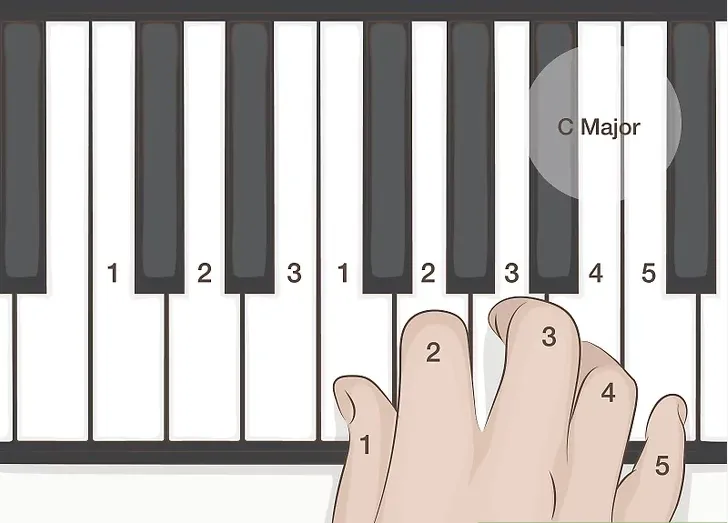
- Practicing Scales: Scales are foundational exercises that familiarize players with note locations and sounds, starting with simple ones like the C major scale.
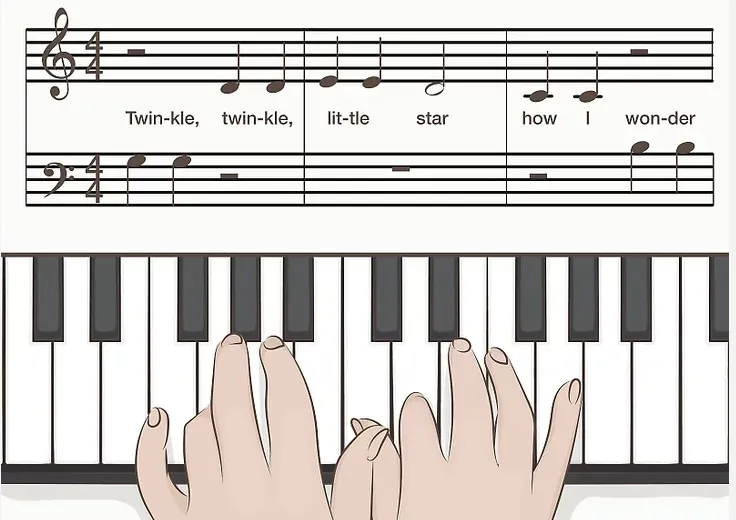
- Playing Simple Songs: Begin with slow, basic melodies to develop reach and familiarity with the keyboard without overwhelming technique or speed.

- Verbalizing Note Names: Saying notes aloud while playing reinforces memory and recognition, aiding in faster identification and play.
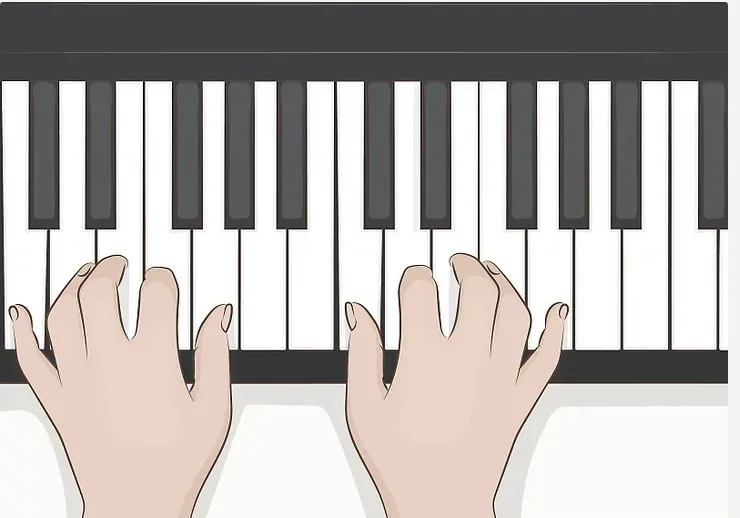
- Using Both Hands: Start with separate hand exercises, gradually integrating both for more complex pieces and scales, adjusting for pitch by moving hands across the keyboard.
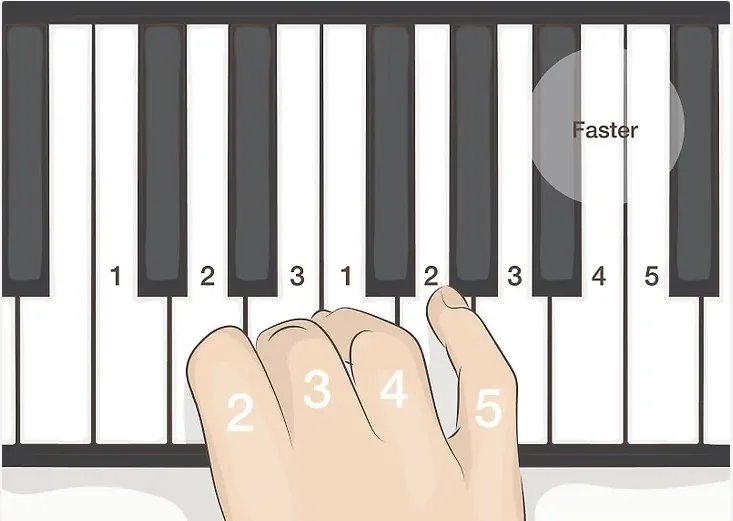
- Increasing Tempo: Practice at varied speeds to build agility and speed, starting with slow renditions before attempting faster play.
Recognizing Notes by Ear 
- Listening Before Playing: Familiarize yourself with music by listening intently before attempting to play, aiming to identify notes and their sequence.
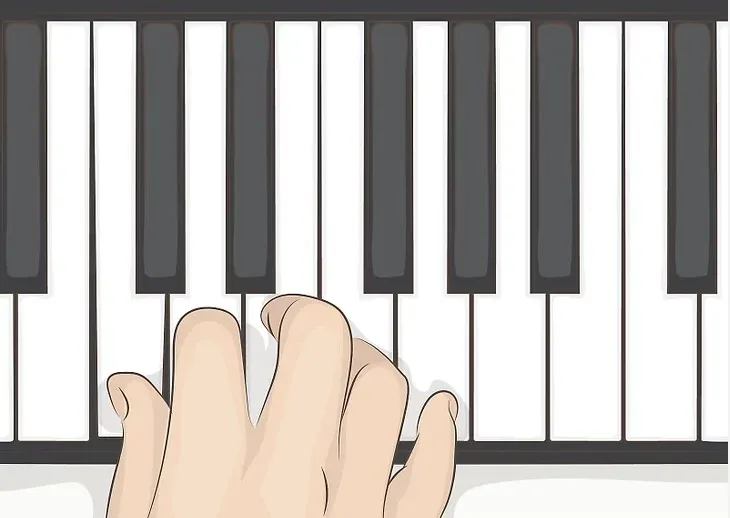
- Matching Piano Keys to Heard Notes: Practice matching piano sounds to those heard, noting the pitch and quality of each key to develop ear recognition.

- Playing Without Visual Aids: Challenge yourself to play songs and scales without looking at the keys, relying on auditory cues and memorized positions to guide you.
Through these techniques, beginners can demystify the piano’s keyboard, moving from novice to confident player by building a strong foundation in note recognition, hand coordination, and auditory skills.